International Steel Prices
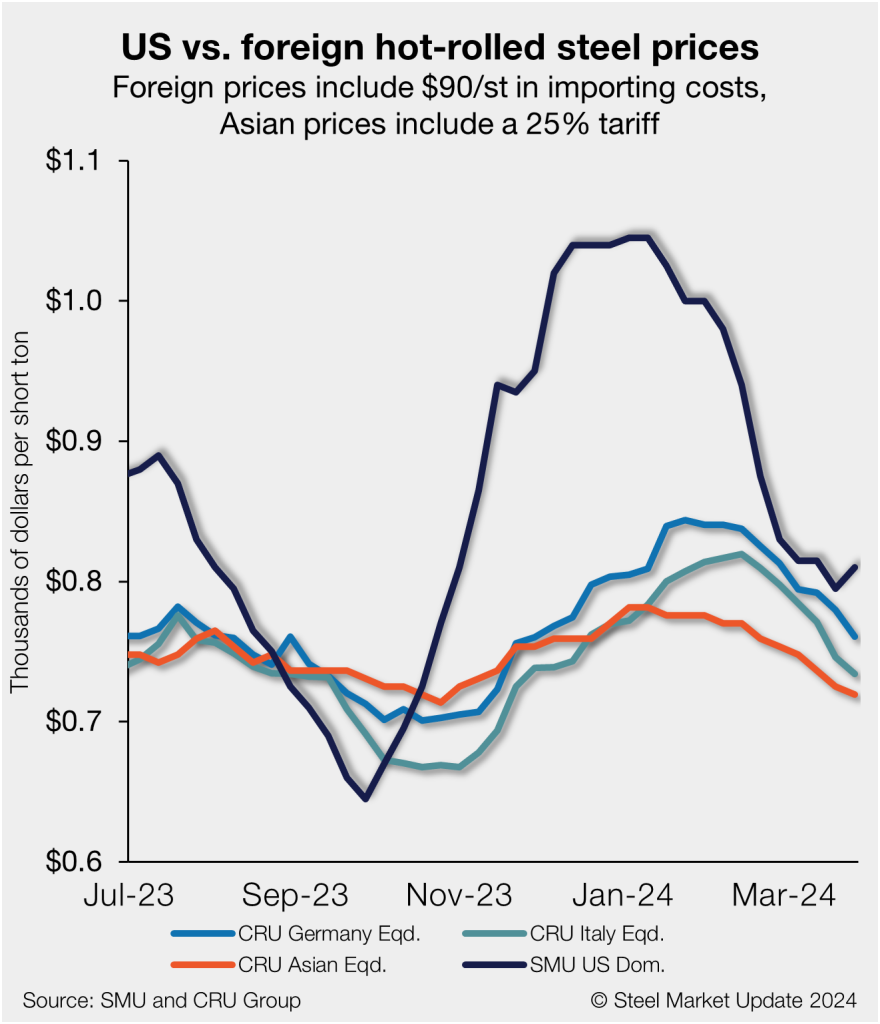
US HR prices rebound, no longer near parity with imports
Written by David Schollaert
March 28, 2024
US hot-rolled (HR) coil and offshore hot band moved further away from parity this week as stateside prices have begun to move higher in response to mill increases.
Recall that the premium domestic product had over imports for roughly five months virtually dissipated in early March. But with US tags moving up and offshore prices still easing, stateside tags have gradually become more expensive.
US HR coil tags edged higher after Cliffs followed up the first price notice in early March with another round of increases on Wednesday. While the ten-week price decline on US tags erased a $300-per-short-ton (st) gap they had over imported HR coil roughly two months ago, the gap is now inching up toward a $100/st premium.
All told, US HRC prices are now 8.9% more expensive than imports. The premium is up from 5.6% in last week’s analysis but off from a high of 27% just a little over three months ago.
In dollars-per-ton terms, US HR coil is now, on average, $72/st more expensive than offshore product, $27 higher week on week (w/w) on average, though still off by $209/st from an average premium of $281/st in mid-December.
This week, domestic HR coil tags were $810/st on average based on SMU’s latest check of the market on Tuesday, March 26. US HR coil prices rose back above the $800/st mark after moving below that threshold for the first time since October.
Methodology
This is how SMU calculates the theoretical spread between domestic HR coil prices (FOB domestic mills) and foreign HR coil prices (delivered to US ports): We compare SMU’s US HR coil weekly index to the CRU HR coil weekly indices for Germany, Italy, and East and Southeast Asian ports. This is only a theoretical calculation. Import costs can vary greatly, influencing the true market spread.
We add $90/st to all foreign prices as a rough means of accounting for freight costs, handling, and trader margin. This gives us an approximate CIF US ports price to compare to the SMU domestic HR coil price. Buyers should use our $90/st figure as a benchmark and adjust up or down based on their own shipping and handling costs. If you import steel and want to share your thoughts on these costs, please get in touch with the author at david@steelmarketupdate.com.
Asian HRC (East and Southeast Asian ports)
As of Thursday, March 28, the CRU Asian HRC price was $503/st, down $5/st vs. the prior week. Adding a 25% tariff and $90/st in estimated import costs, the delivered price of Asian HRC to the US is approximately $719/st. The latest SMU hot rolled average for domestic material is $810/st.
The result: US-produced HRC is theoretically $91/st more expensive than steel imported from Asia. The spread is up $21/st vs. last week – though still far from a seven-month high of $281/st in late December.
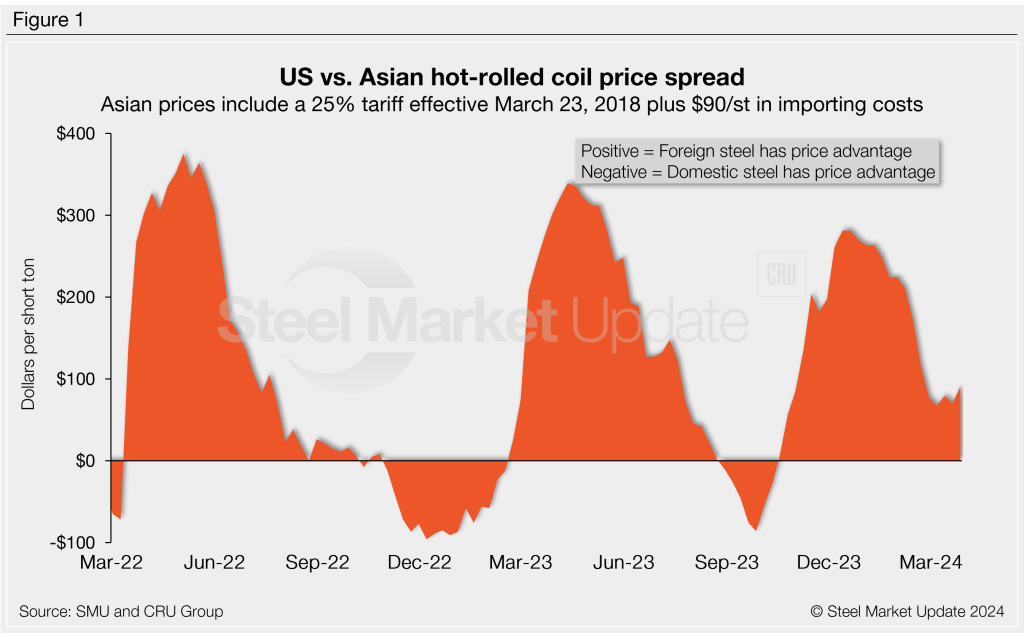
Italian HRC
Italian HR coil prices were down $12/st to roughly $644/st this week. Italian prices are now just $67/st away from a recent bottom of $577/st last October. After adding import costs, the delivered price of Italian HR coil is in theory $734/st.
That means domestic HR coil is theoretically about $76/st more expensive than HR coil imported from Italy. The spread is up $27/st last week. The domestic hot band price premium over offshore product from Italy is down still $221/st from a recent high of $297/st in mid-December.
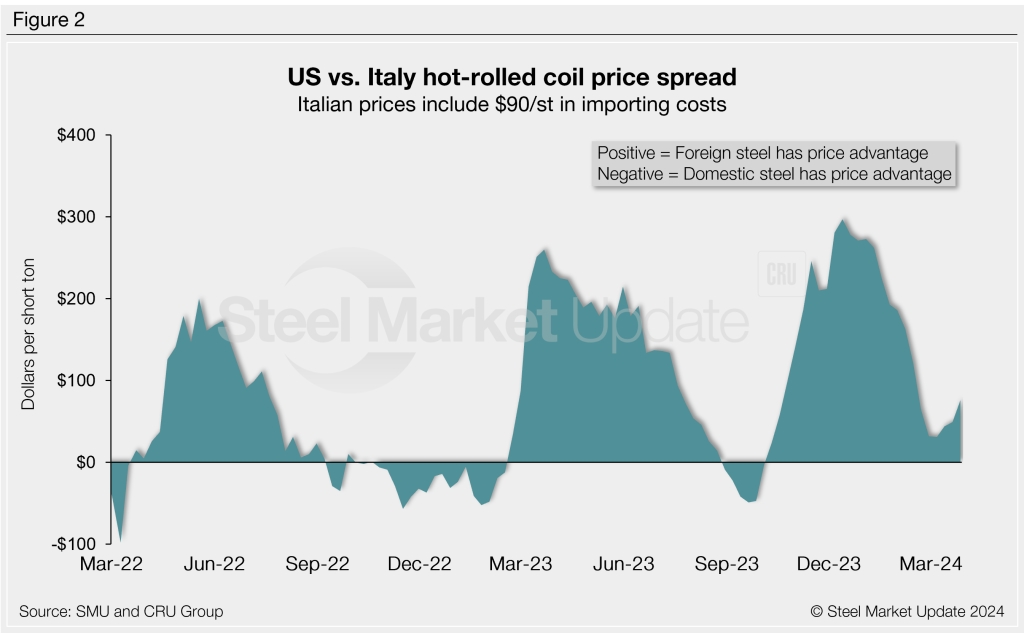
German HRC
CRU’s German HR coil price also ticked down $19/st from the week before to $671/st. After adding import costs, the delivered price of German HR coil is in theory $761/st.
The result: Domestic HR coil is theoretically $49/st more expensive than HR coil imported from Germany. The spread is up $34/st w/w but still down $216/st from 2023’s widest spread of $265/st.
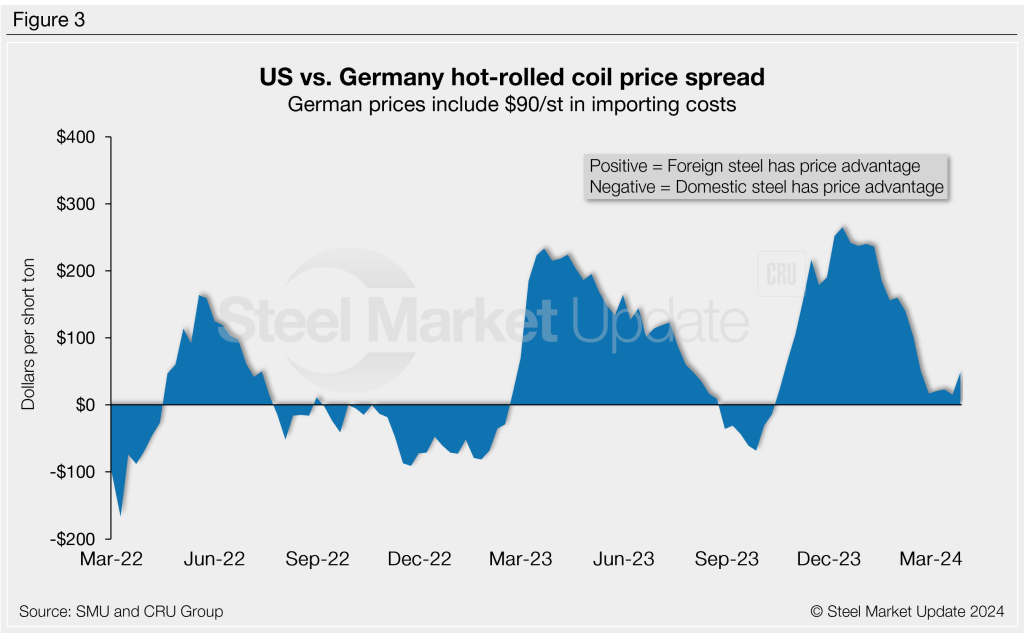
Figure 4 compares all four price indices. The chart on the right zooms in to highlight the difference in more recent pricing.
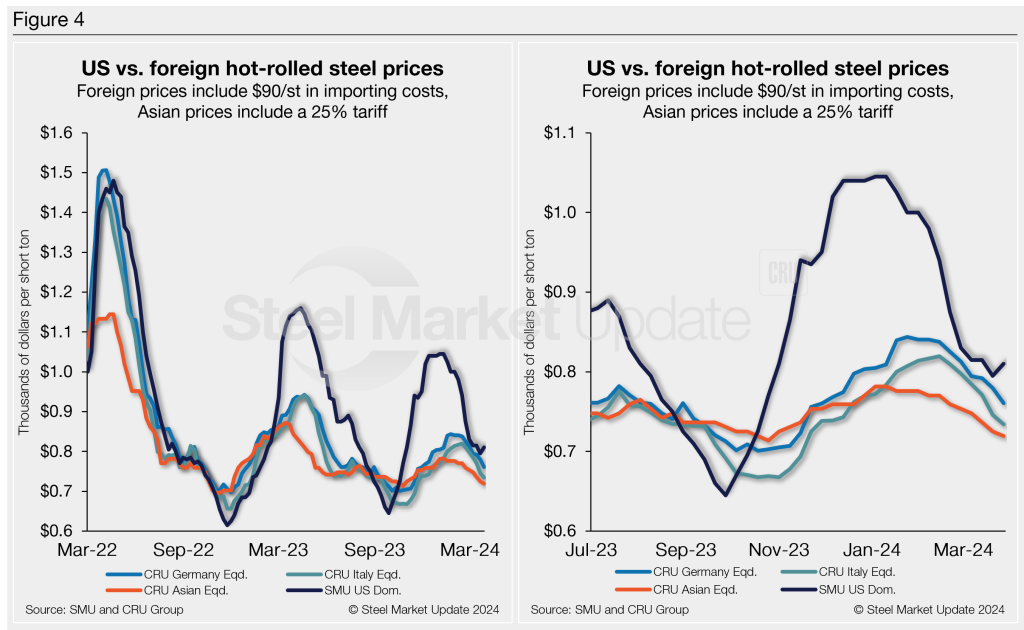
Notes: Freight is important in deciding whether to import foreign steel or buy from a domestic mill. Domestic prices are referenced as FOB the producing mill, while foreign prices are CIF the port (Houston, NOLA, Savannah, Los Angeles, Camden, etc.). Inland freight, from either a domestic mill or from the port, can dramatically impact the competitiveness of both domestic and foreign steel. It’s also important to factor in lead times. In most markets, domestic steel will deliver more quickly than foreign steel.
Effective Jan. 1, 2022, Section 232 tariffs no longer apply to most imports from the European Union. It has been replaced by a tariff rate quota (TRQ). Therefore, the German and Italian price comparisons in this analysis no longer include a 25% tariff. SMU still includes the 25% Section 232 tariff on prices from other countries. We do not include any antidumping (AD) or countervailing duties (CVD) in this analysis.

David Schollaert
Read more from David SchollaertLatest in International Steel Prices

Higher US CR prices inch closer to EU, Japanese tags
US cold-rolled (CR) coil prices continued to tick higher this week, while offshore markets were mixed.

Stacked S232 keeps US HR prices below EU
US hot-rolled coil prices crept up again this week but still trail imports from Europe.

Doubled S232 lifts EU, Japanese CR prices over US tags
US cold-rolled (CR) coil prices edged up again this week, and most offshore markets moved in the opposite direction. But the diverging price moves stateside vs. abroad did little to impact pricing trends. The bigger impact was from Section 232, which were doubled to 50% as of June 3. The higher tariffs have resulted in […]

CRU: Sheet demand remains weak, tariff changes again alter markets
Subdued demand has continued to weigh on steel sheet prices globally.
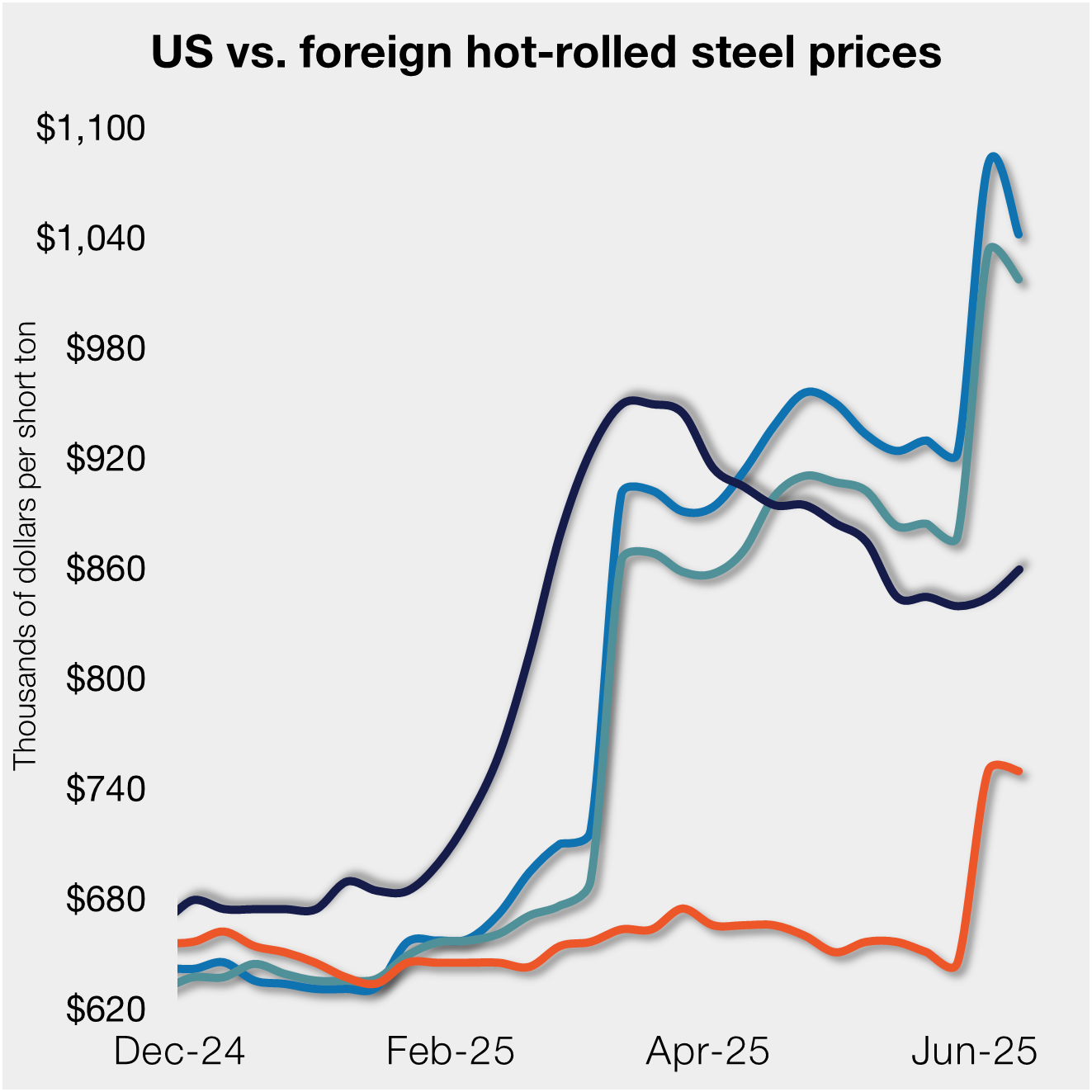
Higher S232 keeps US HR prices at a discount to EU
Domestic hot-rolled (HR) coil prices edged up marginally again this week, while offshore prices ticked down.
